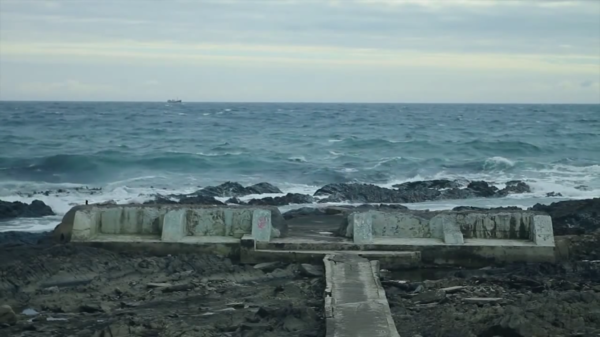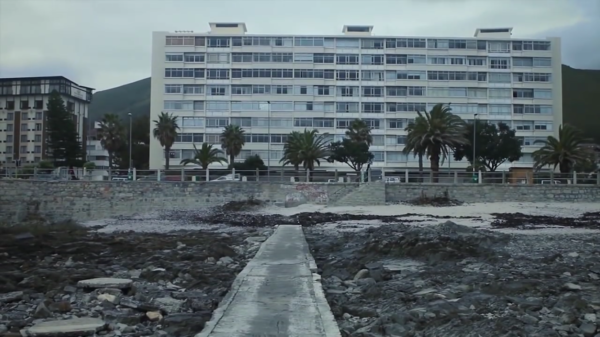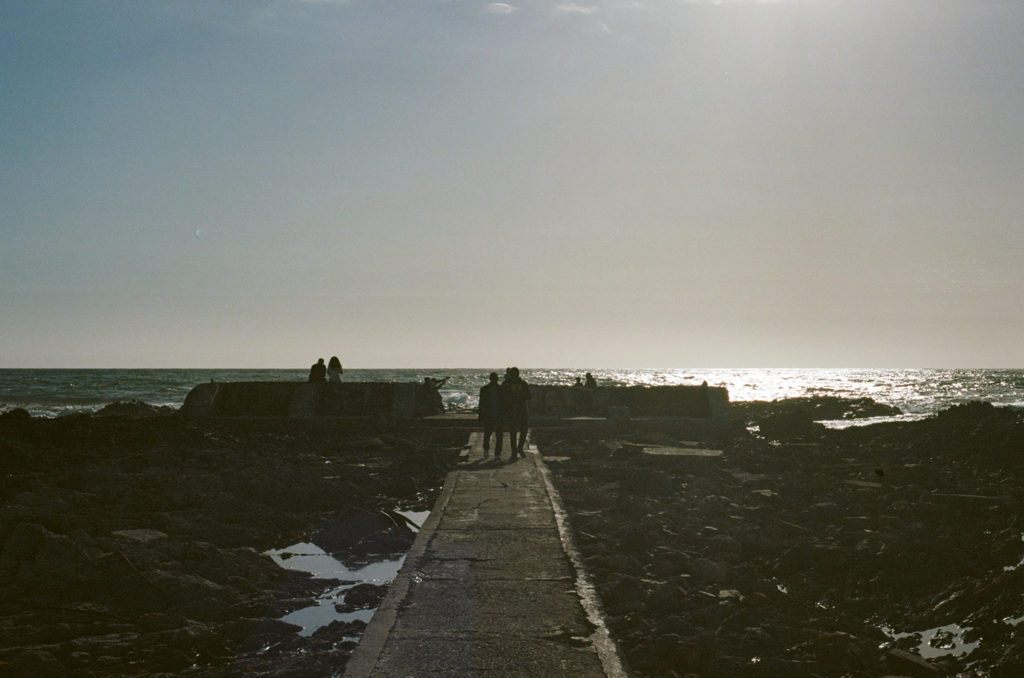In June 2005, Alderman JP Smith, a Sea Point ward councillor at the time, oversaw the demolition of the concrete wall that surrounded Graaf’s Pool.
“We can now make an end to the abuse of Graaf’s Pool,” said Smith at the end of a three-year campaign to destroy the screen wall of the iconic pool.
Smith claimed that the wall facilitated ‘anti-social behaviour’ by hiding acts of prostitution, sex and drug use from public view.
“In time, it became a hotspot for crime,” said Smith. “Condoms and stolen property were found there regularly and rent boys used the place as a hangout.”
The pool bears the name of Jacobus Graaf, the uncle of former politician Sir de Villiers Graaf, who was the leader of the opposition to three apartheid governments.
Until 1929, when it was donated to the city council, the pool was the private domain of the Graaf family, who were able to access the beach via a tunnel that ran underneath what is now Beach Road. The walled-up entrance to the tunnel is still visible today.

The origin of the tunnel, the causeway and the wall that hid the private pool from view is an interesting story that is shrouded in mystery.
According to local lore, the house occupied by the Graaf’s was built in 1903 by Mr Pieter Marais, a wealthy businessman with interests in the wine industry who christened his new abode ‘Bordeaux’ after the famous wine farming region in France.
Lady Marais, the wife of Peter, became known as the ‘Lady of Bordeaux’. She was paralysed from the waist down and would sit in her wheelchair and watch Sea Point strollers from the windows of the Villa Bordeaux.
As legend has it, Mr Marais constructed a pathway for his wife that provided wheelchair access to a private pool on the beachfront. The pathway ran straight over the rocks and a wall was constructed to hide Lady Bordeaux from public view because of the stigma and misunderstanding of disability that was prevalent in society at the time.
The villa Bordeaux was sold to the Graaf family when the Marais family fell into a financial predicament.
The villa was demolished in 1959 and replaced by one of the largest blocks of flats in Sea Point, Bordeaux Residential Apartments, which stands at 239 Beach Road.
“Exactly how much is truth and how much fantasy is not as important as the existence of the story itself,” wrote Andre Malan in his architectural thesis, “Below Bordeaux, Hidden Histories in Sea Point”.
Another origin theory is that the Graaf family built the tunnel so that they could take a leisurely walk to the beach in their silks to bathe in the ocean without having to interact with commoners. Malan wrote, “No doubt at one point this could have been the case but the pool is recorded as being in existence as far back as 1910.
“A more plausible account denies that the tunnel ever reached the villa Bordeaux,” he continued.
The account in question is an article written by John de Nobrega, a Cape Argus journalist who attempted to debunk the tunnel story in 1966.
De Nobrega titled the article “The Tunnel that Never Was” and claimed that the partially covered archway is the remains of a subway for the old railway line that ended on the other side of the tracks.

The story of the wheelchair-bound woman is the most popular story attached to this mysterious tunnel and like most mythologies, it has been reshaped nearly as many times as it has been told and has inspired both creative and academic works.
Malan confirms that Lady Marais ‘almost certainly’ existed and that she fell into poor health after her only child passed away shortly after birth.
The exclusivity of the pool did not wane when it became a public amenity. Behind the wall, wealthy men regularly sunbathed in the nude and women were only allowed to use the beach much later.
“The excluded were forced to imagine what happened behind the clean white walls,” says Malan. “Projections of their forbidden desires overflowed into conversations, novels and newspapers.”
Behind the Wall, a short film inspired by the story describes Graaf’s Pool as a landmark in local consciousness and folklore that has ‘served various marginalised social groups’ and has been reappropriated many times over.
“One can only declare that the value of this story is housed in the power of this unknown,” wrote Malan.
Watch the Behind the Wall below:
Picture: Storm Simpson/screenshots from Behind the Wall video






